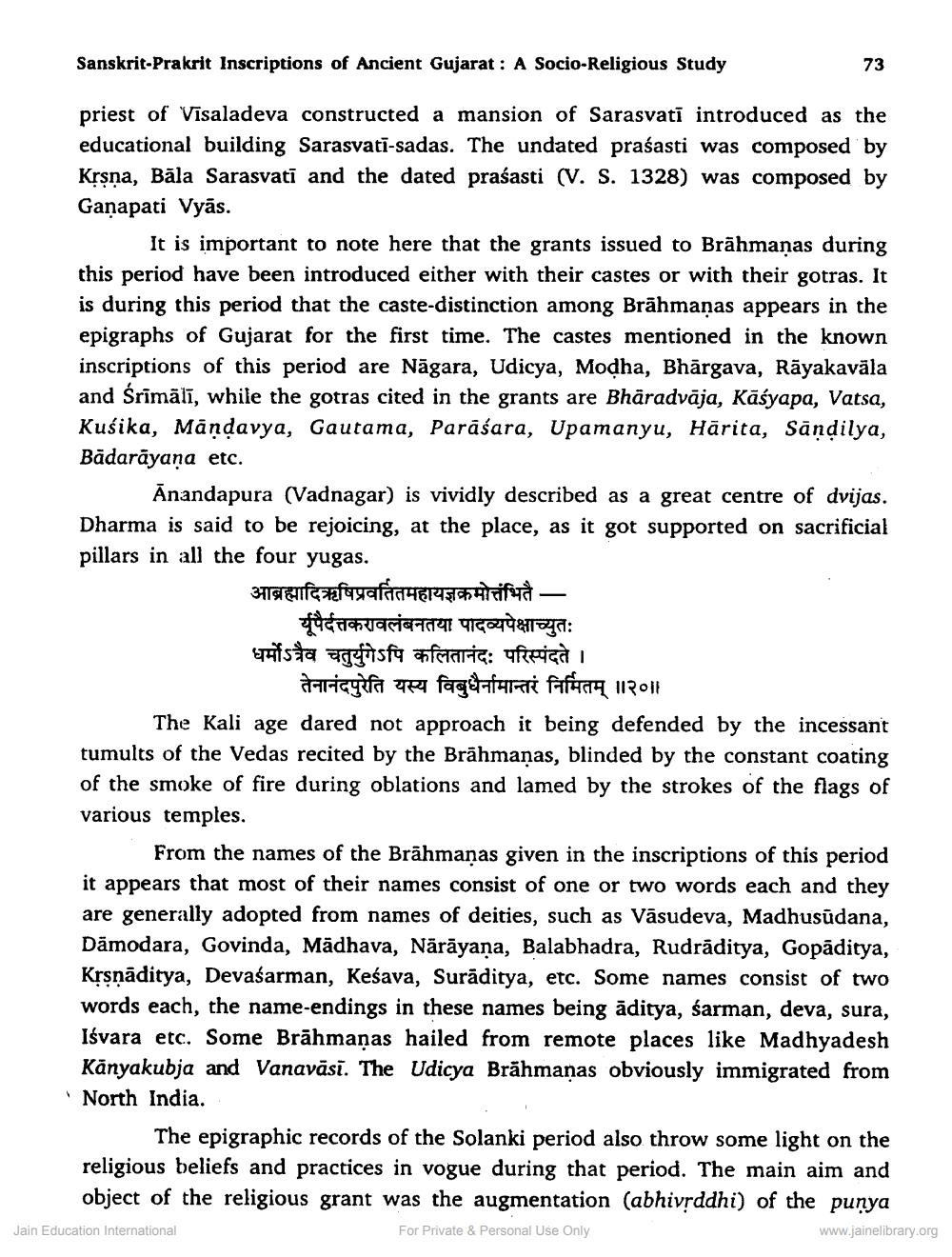________________
Sanskrit-Prakrit Inscriptions of Ancient Gujarat : A Socio-Religious Study
73
priest of Visaladeva constructed a mansion of Sarasvati introduced as the educational building Sarasvati-sadas. The undated praśasti was composed by Krsna, Bala Sarasvati and the dated prasasti (V. S. 1328) was composed by Ganapati Vyās.
It is important to note here that the grants issued to Brāhmanas during this period have been introduced either with their castes or with their gotras. It is during this period that the caste-distinction among Brāhmanas appears in the epigraphs of Gujarat for the first time. The castes mentioned in the known inscriptions of this period are Nāgara, Udicya, Modha, Bhārgava, Rāyakavāla and Srimālī, while the gotras cited in the grants are Bhäradvāja, Kāśyapa, Vatsa, Kuśika, Māndavya, Gautama, Parāśara, Upamanyu, Hārita, Sandilya, Bädarāyana etc.
Anandapura (Vadnagar) is vividly described as a great centre of dvijas. Dharma is said to be rejoicing, at the place, as it got supported on sacrificial pillars in all the four yugas.
आब्रह्मादिऋषिप्रवर्तितमहायज्ञक्रमोत्तंभितै -
यूंपैर्दत्तकरावलंबनतया पादव्यपेक्षाच्युतः धर्मोऽत्रैव चतुर्युगेऽपि कलितानंद: परिस्पंदते ।
तेनानंदपुरेति यस्य विबुधैर्नामान्तरं निर्मितम् ॥२०॥ The Kali age dared not approach it being defended by the incessant tumults of the Vedas recited by the Brāhmanas, blinded by the constant coating of the smoke of fire during oblations and lamed by the strokes of the flags of various temples.
From the names of the Brāhmanas given in the inscriptions of this period it appears that most of their names consist of one or two words each and they are generally adopted from names of deities, such as Vāsudeva, Madhusudana, Dämodara, Govinda, Madhava, Nārāyana, Balabhadra, Rudrāditya, Gopāditya, Krsnāditya, Devaśarman, Keśava, Surāditya, etc. Some names consist of two words each, the name-endings in these names being aditya, śarman, deva, sura, Isvara etc. Some Brāhmaṇas hailed from remote places like Madhyadesh Kanyakubja and Vanavāsi. The Udicya Brāhmanas obviously immigrated from North India.
The epigraphic records of the Solanki period also throw some light on the religious beliefs and practices in vogue during that period. The main aim and
object of the religious grant was the augmentation (abhivrddhi) of the punya Jain Education International For Private & Personal Use Only
www.jainelibrary.org




